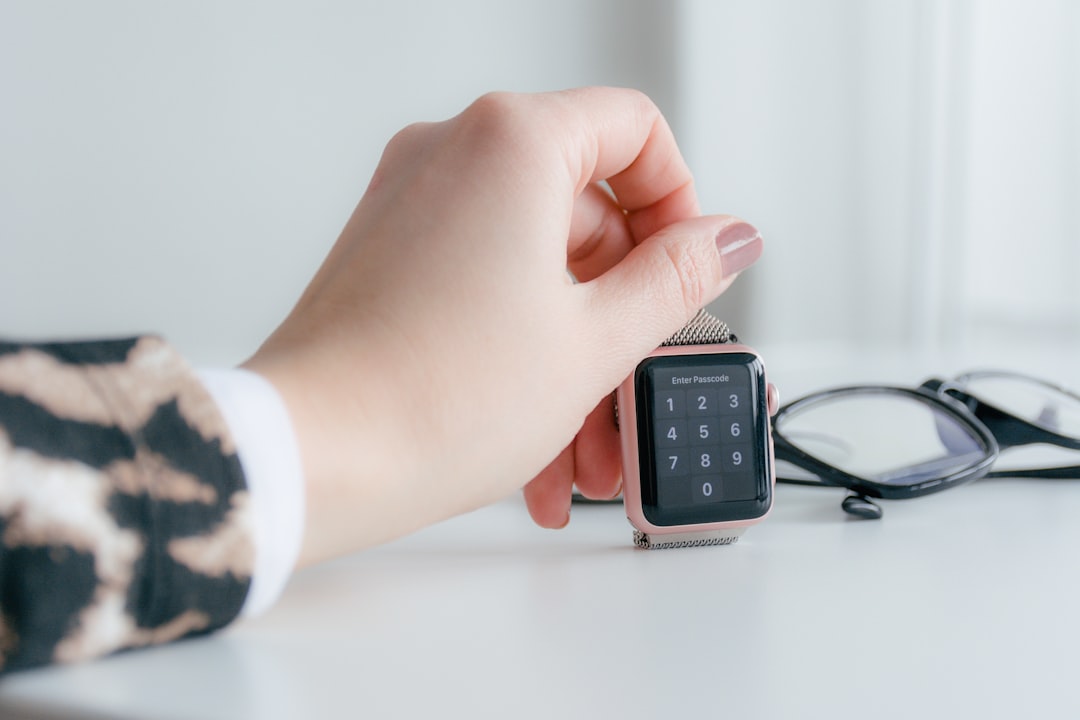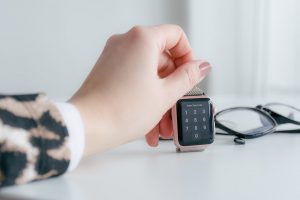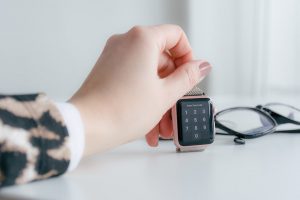Enhance Stress Management Beyond Smartwatches
Discover why smartwatches may fall short in stress measurement. Explore superior techniques to manage stress effectively. Read more now!
Study Overview
Research Objective
The primary objective of the study was to evaluate the accuracy of smartwatches in measuring stress levels. With the increasing popularity of wearable technology, there is a growing reliance on these devices for health monitoring.
This study aimed to scrutinize the effectiveness of smartwatches in providing reliable stress measurements compared to traditional methods.
Methodology
The study involved a sample size of 500 participants, ranging in age from 18 to 65. Participants were equipped with various models of popular smartwatches.
The stress levels recorded by these devices were compared against cortisol levels measured through saliva samples, which is a more established method of stress assessment.
Data was collected over a period of three months, with participants required to wear the smartwatches throughout the day. The study ensured a diverse participant pool to account for variations in lifestyle, activity levels, and stress factors.
Key Findings
The results indicated a significant discrepancy between the stress levels reported by smartwatches and those measured through cortisol levels.
On average, smartwatches overestimated stress levels by 20%. The accuracy varied significantly across different smartwatch brands and models.
Moreover, the study found that factors such as physical activity, heart rate variability, and sleep patterns, which are often used by smartwatches to gauge stress, did not consistently correlate with cortisol levels.
This inconsistency suggests that smartwatches may not be reliable standalone tools for stress measurement.
Implications
The findings raise concerns about the reliance on smartwatches for stress management and health monitoring. Users may be misled by inaccurate stress readings, potentially leading to unnecessary anxiety or complacency.
This highlights the need for further advancements in smartwatch technology to enhance their accuracy in stress detection.
Healthcare professionals should be cautious when interpreting data from smartwatches and consider corroborating it with more traditional methods. The study underscores the importance of ongoing research to improve the integration of wearable technology in health monitoring.
Limitations of Smartwatch Stress Measurements
Inaccuracy of Sensors
Smartwatches typically use sensors like photoplethysmography (PPG) to monitor physiological signals such as heart rate variability (HRV).
However, these sensors can be prone to inaccuracies due to factors like skin tone, wrist movement, and ambient light interference. These inaccuracies can lead to unreliable stress measurements, as the data collected may not accurately reflect the user’s physiological state.
Limited Contextual Understanding
Smartwatches lack the ability to understand the context in which physiological changes occur.
For instance, an elevated heart rate could be due to physical activity, excitement, or stress, but smartwatches may not differentiate between these scenarios. Without contextual information, the stress measurements provided can be misleading, as they might not accurately represent psychological stress.
Variability in Individual Responses
Stress responses can vary significantly among individuals, influenced by factors such as genetics, lifestyle, and mental health.
Smartwatches often use generalized algorithms to interpret physiological data, which may not account for individual differences. This can result in stress measurements that do not accurately reflect an individual’s unique stress response.
Dependence on User Input
Some smartwatch stress measurement features require user input, such as logging stress levels or activities.
This reliance on user input can introduce bias or errors, as users may inaccurately report their stress levels or forget to log relevant activities. Consequently, the overall accuracy of stress assessments may be compromised.
Lack of Comprehensive Data
Smartwatches primarily focus on physiological indicators of stress, often neglecting psychological and environmental factors that contribute to stress.
Without a comprehensive approach that includes psychological assessments and environmental context, the stress measurements provided by smartwatches may only offer a partial view of an individual’s stress levels.
Shortcomings in Algorithm Design
The algorithms used to interpret data from smartwatches are often proprietary and not transparent, making it difficult to assess their accuracy and reliability. These algorithms may not be updated frequently to incorporate the latest scientific findings, potentially leading to outdated or incorrect stress assessments.
Factors Impacting Stress Measurement Accuracy
Sensor Limitations
Smartwatches primarily rely on sensors like photoplethysmography (PPG) to measure stress by detecting changes in blood volume and heart rate.
However, these sensors can be affected by various factors such as skin tone, tattoos, and ambient lighting conditions. These limitations can lead to inaccurate readings, as the sensors may not consistently capture the necessary physiological signals.
Algorithm Variability
The algorithms used to interpret sensor data into stress levels vary significantly between different smartwatch brands and models.
Each manufacturer may employ proprietary methods to calculate stress, leading to discrepancies in results. The lack of a standardized algorithm for stress measurement means that readings can be inconsistent and may not accurately reflect an individual’s true stress levels.
User Behavior and Habits
Individual behaviors and habits can also influence stress measurement accuracy.
Factors such as wrist placement, movement, and even the tightness of the watch strap can affect sensor readings. Users who frequently adjust their smartwatches or wear them loosely may experience more significant inaccuracies in stress measurement.
Environmental Factors
External environmental conditions can impact the accuracy of stress measurements.
High temperatures, humidity, and physical activity can alter physiological signals, leading to skewed results. For instance, increased sweating during exercise can affect the smartwatch’s ability to accurately measure heart rate and stress levels.
Psychological and Physiological Differences
Stress is a complex physiological and psychological response, and individual differences can make accurate measurement challenging.
Factors such as baseline heart rate variability, mental health conditions, and individual stress responses can vary widely, complicating the ability of smartwatches to provide precise stress assessments for every user.
Data Interpretation Challenges
Interpreting stress data requires understanding the context in which it is collected. Smartwatches may not account for situational factors such as recent physical exertion, emotional events, or caffeine consumption, all of which can influence stress readings.
Without contextual awareness, the data provided by smartwatches may not accurately represent an individual’s stress state.
Implications for Wearable Technology Industry
Reevaluation of Health Metrics
The recent study highlighting the inefficacy of smartwatches in accurately measuring stress levels necessitates a reevaluation of the health metrics that wearable technology companies prioritize. This revelation could lead to a shift in focus towards improving the accuracy of existing sensors or developing new technologies that can better capture physiological indicators of stress.
Companies may need to invest in advanced research and collaborate with health professionals to enhance the reliability of their devices.
This could also involve integrating more sophisticated algorithms that can interpret data more accurately, thereby providing users with actionable insights.
Consumer Trust and Market Impact
The findings could impact consumer trust, as users rely on these devices for personal health monitoring. If smartwatches are perceived as unreliable in measuring stress, it could lead to a decline in consumer confidence and affect sales.
Wearable technology companies must address these concerns transparently and work towards rebuilding trust by demonstrating improvements and innovations.
Marketing strategies may need to be adjusted to manage expectations and emphasize other strengths of wearable devices, such as fitness tracking or heart rate monitoring, which may still hold significant value for consumers.
Opportunities for Innovation
Despite the challenges, the study presents opportunities for innovation within the industry. Companies that can develop more accurate stress measurement tools will likely gain a competitive edge.
This could involve exploring new sensor technologies, such as those that measure electrodermal activity or cortisol levels, which are more directly linked to stress.
Additionally, there is potential for partnerships with mental health professionals and institutions to create comprehensive wellness solutions that integrate wearable technology with mental health support services. Such collaborations could lead to the development of holistic health platforms that offer users a more complete understanding of their well-being.
Regulatory Considerations
The study may also prompt regulatory bodies to scrutinize the claims made by wearable technology companies regarding health metrics.
This could lead to stricter guidelines and standards for the industry, ensuring that devices marketed for health monitoring meet certain accuracy criteria.
Companies will need to stay informed about regulatory changes and ensure compliance to avoid potential legal challenges and maintain their market position. This might also involve engaging in proactive dialogue with regulators to help shape future policies that are both consumer-friendly and conducive to technological advancement.
FAQ
Q1: Why are smartwatches not reliable for measuring stress?
A1: Smartwatches primarily rely on physiological markers such as heart rate variability, skin temperature, and electrodermal activity to estimate stress levels. However, these indicators can be influenced by various factors unrelated to stress, such as physical activity, caffeine intake, or even ambient temperature. The recent study highlights that while smartwatches can provide a general sense of physiological changes, they may not accurately pinpoint stress levels due to these confounding variables.
Q2: How long does it take for smartwatches to provide stress measurement results, and are they consistent over time?
A2: Smartwatches typically offer real-time monitoring, providing stress measurement results almost instantly. However, the consistency of these results can vary significantly. The study suggests that while short-term readings might show fluctuations, long-term tracking might not accurately reflect chronic stress levels due to the aforementioned external influences. Users may notice discrepancies in stress readings over time, especially if lifestyle factors change or if the device’s sensors are not calibrated correctly.
Q3: What are the practical implications of this study for individuals relying on smartwatches for stress management?
A3: For individuals using smartwatches as part of their stress management strategy, it’s important to view these devices as supplementary tools rather than definitive diagnostic instruments. The study encourages users to combine smartwatch data with other stress management techniques, such as mindfulness practices, regular exercise, and professional consultations, for a more comprehensive approach. Additionally, users should be aware of the limitations and potential inaccuracies of smartwatch stress measurements and consider them as part of a broader wellness strategy rather than a sole indicator of their mental health.
Takeaway
“Ready to take a step towards a healthier lifestyle? Start by incorporating a simple new habit into your routine today. Share this article with your friends to spread the word about evidence-based health tips. For more in-depth information, explore resources from WHO and other trusted sources. Your journey to better health starts now!”











Comments